
Light Needs

Mature Height

Mature Spread

Growing Zones
Here is an improved cultivar of the Purple Coneflower, an indigenous wildflower in the United States. It's brilliant orange petals with the dark bristly center provides a great contrast to the dark green lush leaves. The bright orange petals are held out horizontally without much evidence of the coneflower droop that some species exhibit. They are single petals that overlap a lot, giving them a fuller, double petalled look. There is a cute little curl at the end of some of the petals, giving this beautiful perennial flowers a slightly mussied look, adding to its charm and appeal.
Coneflowers are native to North American and E. purpurea is native to North and Central United states regions. They are tough, hardy wildflowers that grow in open fields and meadowlands, oftentimes thriving in particularly poor rocky soils. Hardy in Zones 4 to 8, Eye-Catcher Tanager will thrill Northern and Midwest gardeners with its brilliant colors and compact, well branched shape. Bees and butterflies will not be able to stay away from them, but deer typically won’t browse on them, making this perennial an environmentally good choice to grow. Save the pollinators!
Eye-Catcher Tanager Coneflower Care
An easy to care for perennial, Echinacea will grow in just about any soil you want to throw it in, poor to fertile. It prefers a sandy loamy soil with an average pH range of 5.8 to 6.2. Good news for most gardeners, though, is that it tolerates a wide range of pH levels as well, drawing its nutrients efficiently no matter where it is planted. It prefers a full sun location in all regions of its hardiness zones. It is fairly drought tolerant once it is established and it will not tolerate soggy soils. Especially during winter months when there may be snow or frequent precipitation, Echinacea will suffer if the soil does not drain properly. Fertilizer is typically not needed. Amend particularly poor soil with some well composted organic material for best results.
Deadheading will encourage new blooms to grow. Clip the stem just above the top two sets of leaves to keep the plant looking good and blooming profusely. They bloom in early spring through to late summer. Consider leaving some spent flowers and seed cones on the plants in the later summer to feed the songbirds a valuable source of nutrients for them and allow the plant to reseed itself if you would like more of them . These cones also make an interesting winter feature if left on the plant. Prune stems down to the base in late winter, early spring before new growth appears.
Eye-Catcher Tanager Coneflower Spacing
Space your plants 16 to 18 inches apart to give plenty of room to grow and to encourage good air circulation to aid in plant disease prevention. Water in early mornings so the afternoon sun dries the plants before nightfall. This will help to prevent powdery mildew, a plant disease that can affect Echinacea. Growing up to 24 inches tall and spreading out to 18 inches wide, this lovely bright perennial will be a welcome sight in your garden bed or when massed out in drifts of color in your landscape this spring.
Eye-Catcher Tanager Coneflower Information
| USDA Hardiness Zones: 4-8 |
| Plant Type: Perennial |
| Sunlight Exposure: Partial Sun to Full Sun |
| Mature Height: 22 - 24 Inches |
| Mature Width: 16 - 18 Inches |
| Plant Spacing: 16 - 18 Inches |
| Growth Habit: Upright |
| Flower Color(s): Orange |
| Flower Shade: Gold/Orange Shades |
| Seasonal Interest: Summer to Early Fall |
| Foliage Type: Herbaceous |
| Foliage Color(s): Green Shades |
| Attracts: Bees, Birds, Butterflies, Hummingbirds |
| Resists: Deer |
| Tolerates: Heat, Drought, Salt |
| Features: Attracts Pollinators, Cut Flowers, Low Maintenance, Native to North America |
| Uses: Border Plant, Containers, Cut Flowers, Dried Flowers, Landscape, Mass Planting |
| Plant Brand: Proven Winners |
| Botanical/Scientific Name: Echinacea 'Tanager' PPAF |
Simple Plant Spacing Calculator
Please Note: The pictures below are to give a general representation of the different container sizes. The actual size/ages of plants are estimates and will vary based on type of plant, time of year, last pruning & many other factors.
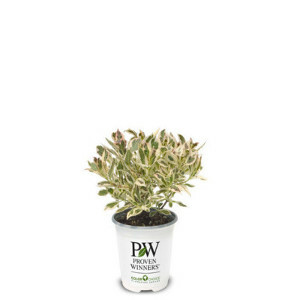
Also Known As:
Quart
Plant Age:
~ 6 months - 1 year
Plant Size:
~ 4"-8"
Pot Size:
~ 4.75"H x 4.5"W
Volume:
1.50 quarts
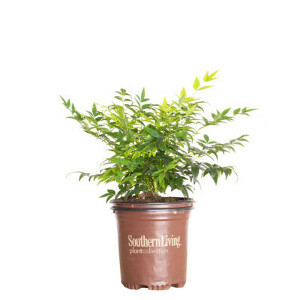
Also Known As:
2.5 Quart Pot
Plant Age:
~ 1 - 2 years old
Plant Size:
~ 8"-12"
Pot Size:
~ 6.5"H x 6.5"W
Volume:
2.20-2.30 quarts
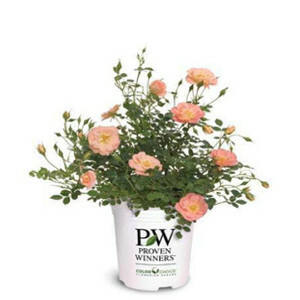
Also Known As:
#1 Container
1 Gallon
Plant Age:
~ 1 - 2 years old
Plant Size:
~ 10"-14"
Pot Size:
~ 7"H x 7.75"W
Volume:
2.26-3.73 quarts
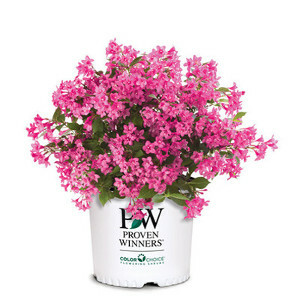
Also Known As:
#2 Container
2 Gallon
Plant Age:
~ 1.5 - 3 years old
Plant Size:
~ 12"-18"
Pot Size:
~ 9.5"H x 9.5"W
Volume:
1.19-1.76 gallons
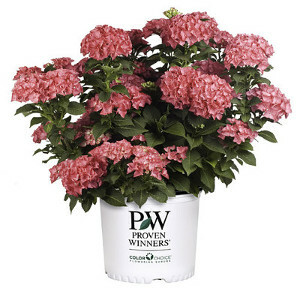
Also Known As:
#3 Container
3 Gallon
Plant Age:
~ 2 - 4 years old
Plant Size:
~ 12"-30"
Pot Size:
~9.5"H x 11"W
Volume:
2.32-2.76 gallons

Also Known As:
#5 Container
5 Gallon
Plant Age:
~3-4 years old
Plant Size:
~ 20" - 60"
Pot Size:
~11" H x 10 1/2” W
Volume:
3.5 - 4 gallons

We stand behind our plants with industry-leading guarantees to give you peace of mind.
We want your plants to arrive in great condition! If you notice any issues upon delivery, contact us within 3 days.
Starting January 1, 2026 all bushes, perennials & trees purchased come with an extended 1-year warranty for added confidence. If your plant dies due to a health issue within a year, we’ll make it right.

Pre-ordered plants are scheduled to ship in Spring 2026. We carefully plan our shipping dates based on your USDA Plant Hardiness Zone to ensure optimal planting conditions upon arrival. Want it sooner/later? Reach out, and we'll try our best to accommodate.
Estimated ship week for pre-ordered plants will ship based on growing zones as shown below.
| Growing Zone | Estimated Ship Week |
|---|---|
| Zone 10 | March 30th |
| Zone 9 | March 30th |
| Zone 8 | April 6th |
| Zone 7 | April 13th |
| Zone 6b | April 20st |
| Zone 6a | April 27th |
| Zone 5b | May 4th |
| Zone 5a | May 11th |
| Zone 4 | May 18th |
| Zone 3 | May 25th |
Note: These are only estimated ship dates. Plants may ship out later depending on weather & growing conditions of the plant.
Note: Only plants indicated as pre-order will ship as shown above. All other plants and hard goods will ship as normal.
Plants that are currently in stock typically ship within 2-7 business days after your order is placed.
Plant Addicts ships to the lower 48 states within the U.S. Unfortunately, we do not currently ship to Alaska, Hawaii, or internationally.
This plant cannot be shipped to the following states: AK, HI. These restrictions apply only to this specific plant due to agricultural regulations or other limitations. Other plants may still be available for shipping to these states.
If you have any questions about shipping restrictions, feel free to reach out to our team!





